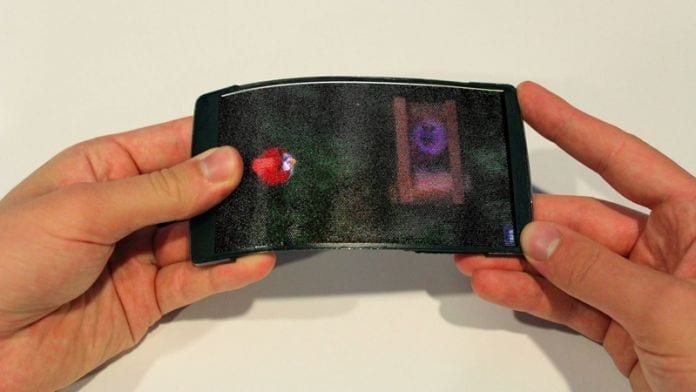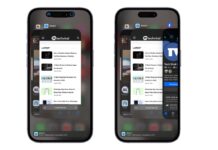Researchers have developed world’s first holographic flexible smartphone display which is named as HoloFlex. The display uses variety of small lenses laminated into flexible 1920 x 1080 HD OLED screen. It lets many people to concurrently view 3D images without the requirement of 3D glasses.
Researchers Develop Smartphone With Flexible and 3D Holographic Screen
Researchers at Queen’s University’s Human Media Lab in Ontario, Canada have successfully developed “world’s first holographic flexible smartphone.” The flexible smartphone developed is dubbed as HoloFlex.
The device when bent, its full HD [1920 x 1080] screen is able to display a 3D image without the need of glasses. A bend sensor in the interior of the device allows users operate objects of the z-axis, adding three-dimensional depth input.
“HoloFlex offers a completely new way of interacting with your smartphone,” Roel Vertegaal, professor of human-computer interaction at Queen’s University’s School of Computing, said in a statement. “It allows for glasses-free interactions with 3D video and images in a way that does not encumber the user.”
This flexible device also lets you play games by bending the display’s as shown in the video below. It also lets you play games like Angry Birds and to perform granular image editing & graphics design.
“In a game such as Angry Birds, for example, users would be able to bend the side of the display to pull the elastic rubber band that propels the bird,” according to a news release. “When the bird flies across the screen, the holographic display makes the bird literally pop out of the screen in the third dimension.”
“When bending the display users literally pop out of the screen and can even look around each other, with their faces rendered correctly from any angle to any onlooker,” says Dr. Vertegaal.
The device shows images into 12 pixel circles which are then projected via 3D printed microlens array containing more 16,000 fisheye lenses.
In terms of specifications, the phone is sporting 2GB Ram, runs on Android 5.1 and is powered by 1.5GHz Qualcomm Snapdragon 810 processor.



